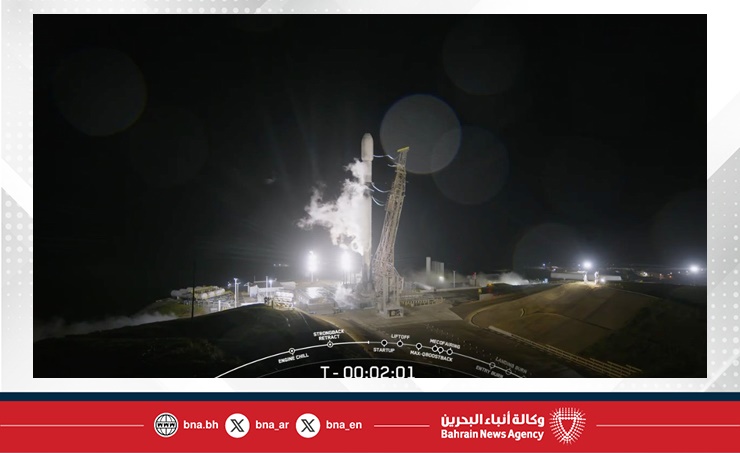Al Munther satellite showcases national space technology advancements

Manama, Mar. 15 (BNA): Al Munther satellite stands as a testament to the the Kingdom of Bahrain’s commitment to localising space technologies and advancing national capabilities in the field. Since the launch of Light-1, the National Space Science Agency (NSSA) has continued to build the expertise of Bahraini engineers, leading to the successful design, development, and management of Al Munther entirely within the Kingdom. The project was executed in collaboration with regional and international partners to ensure compliance with the highest space industry standards.
Al Munther marks a major step toward strengthening Bahrain’s space technology independence. It has provided Bahraini engineers with hands-on experience in developing advanced space systems, from mission concept and engineering design to software development, environmental testing, and operational deployment. The project has facilitated knowledge transfer and laid the groundwork for future Bahraini-led space initiatives.
Designed and developed domestically by NSSA engineers, Al Munther is a milestone achievement in Bahrain’s space sector. It reflects national efforts to localise space technologies and enhance Bahraini expertise in this critical field, paving the way for increased reliance on domestic capabilities for future space projects.
The satellite carries a range of advanced payloads, including a medium resolution remote sensing camera (20 meters/pixel) dedicated to capturing images of Bahrain and its territorial waters. The camera’s imaging capabilities support environmental and agricultural studies, urban development monitoring, coastal surveillance, and other applications that serve various governmental entities. Artificial intelligence (AI) algorithms developed by NSSA engineers will be applied to enhance image resolution and analyse collected data before transmission to the ground station.
Al Munther is also equipped with an AI driven image processing system, a pioneering feature that makes it the first nanosatellite in the region to implement real-time onboard AI analysis. This advanced software autonomously processes images before transmission, categorising them based on quality and scientific relevance. Invalid images, such as those obscured by cloud cover or affected by interference, are compressed and archived, reducing data transmission demands and optimising energy consumption. This innovation represents a significant advancement in how nanosatellites handle data, enabling preliminary analysis in orbit and conserving ground-based resources.
To ensure data security, the satellite incorporates a cybersecurity payload developed entirely by Bahraini specialists. This system employs advanced encryption technologies to protect data from unauthorised access or tampering. Additionally, authentication protocols ensure that only authorised personnel can operate the satellite, reinforcing Bahrain’s digital independence in space security and safeguarding its space assets.
In a distinctive initiative to promote Bahrain’s space achievements globally, Al Munther also features a radio broadcast payload dedicated to enhancing national identity in space. The satellite transmits the Bahraini national anthem on designated frequencies, enabling amateur radio operators worldwide to receive the signal with basic equipment. Additionally, a royal message from His Majesty King Hamad bin Isa Al Khalifa is transmitted in Arabic and English via digital signals that can be decoded by radio operators and space enthusiasts. This initiative highlights Bahrain’s advancements in space exploration and strengthens its international presence in the sector.
Al Munther underwent a rigorous series of environmental and operational tests to ensure its resilience in the harsh conditions of space. These tests were conducted at specialised facilities regionally and internationally. The payload readiness assessments took place at the National Space Science and Technology Center in the United Arab Emirates, where the camera’s functionality was verified. Environmental testing was conducted at the Egyptian Space Agency in Egypt, including thermal resistance and vibration simulations replicating launch and in-orbit conditions. The final integration and readiness checks were carried out in the Netherlands in cooperation with ISISPACE, ensuring the satellite’s full preparedness for its mission. These comprehensive evaluations were crucial in confirming Al Munther’s ability to perform reliably in orbit, maximising the success of its scientific objectives.





